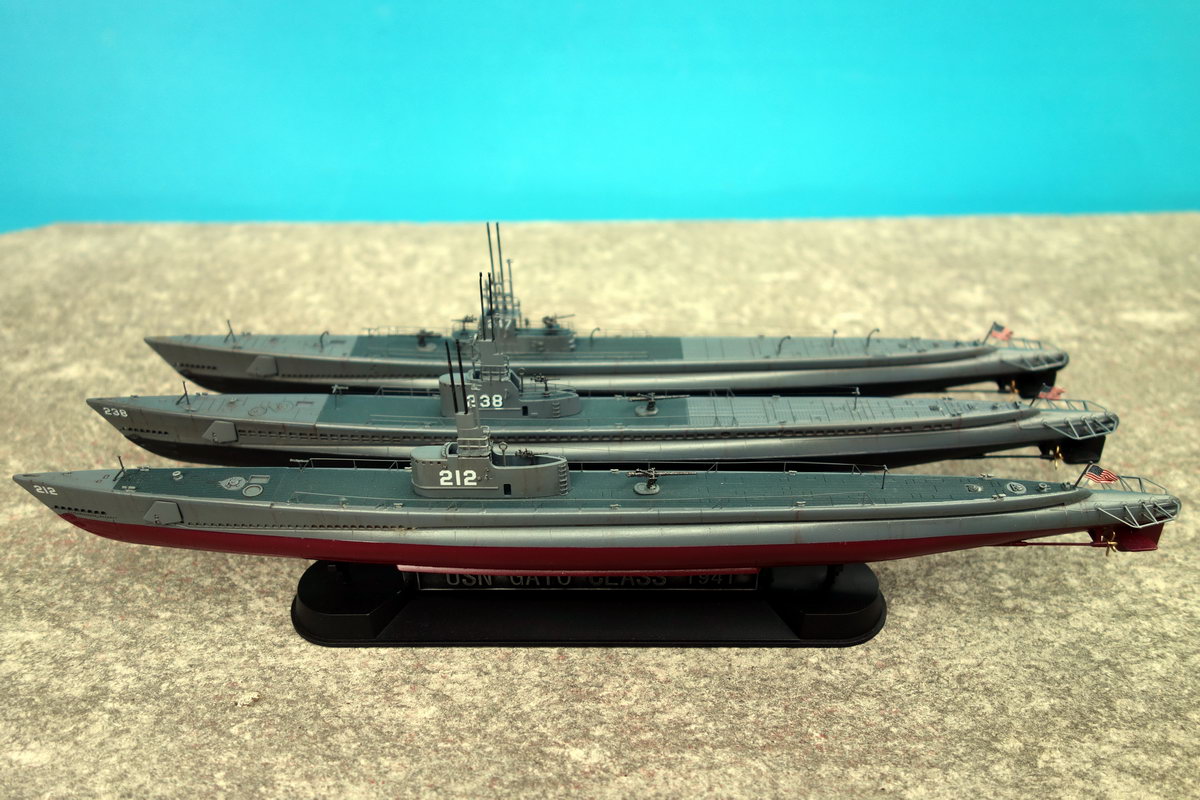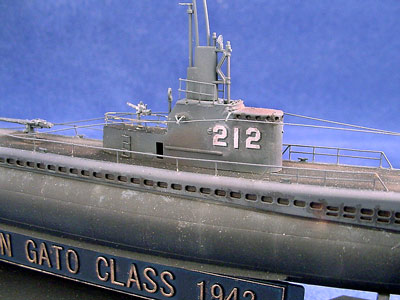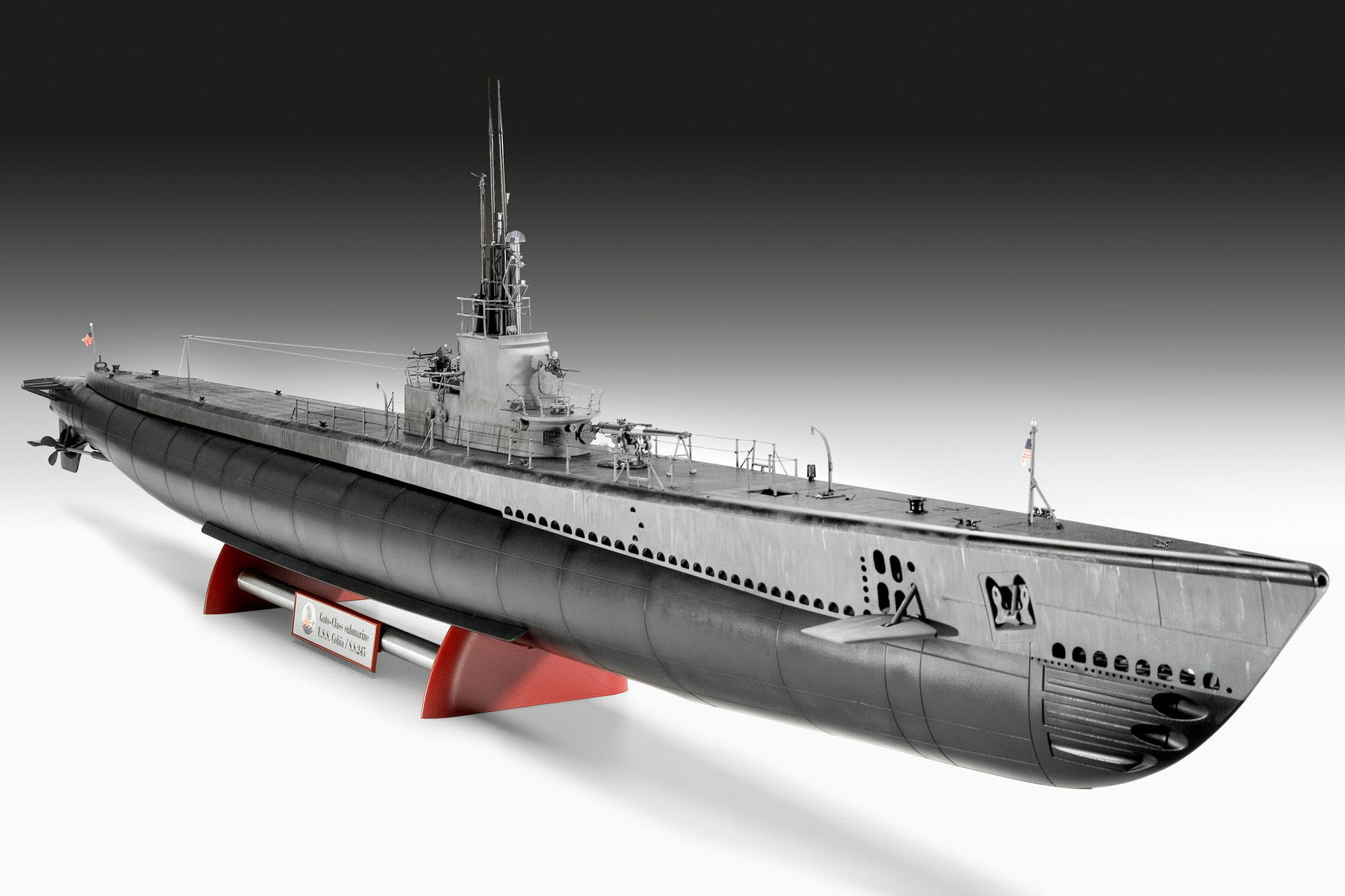
The stern was capped by a rudder held under the hull dividing the two propellers fitted atop shaft extensions. The center section bulged to accommodate the needed internal volume while the top face of the hull was flat as if the deck of a boat, a practice since abandoned by modern-day submarines. The design was characterized by its boat-like bow section and slim profile. Outwardly, the USS Gato followed a well-accepted method of design for its external configuration.

The crew was further made up of specialists such as mechanics, torpedo handlers, cooks, surface gunners and various systems personnel. The USS Gato was generally crewed by 60 to 80 personnel which included 6 commanding officers. The crew could also stay submerged for up to 48 hours if need be - often when maintaining the element of surprise or attempting to evade attacking destroyers. Range was approximately 11,000 nautical miles when traveling on the surface, allowing the vessel to stay out on patrol for some 75 total days. The Gato-class could dive to depths of 300 feet (officially) though many were known to go deeper, stressing the limits of their steel hulls to the max. Maximum surface speed was 21 knots while the vessel could make headway at 9 knots underwater. 4 x General Electric electric reduction gear motors managed the two propeller shafts outputting 5,400 shaft horsepower while on the surface and 2,740 shaft horsepower when submerged. This proved the most vulnerable time for submarines in general as their submerged time was directly tied to their battery supplies - the fuller the charge, the longer one could stay safely underwater. As with all diesel-electric submarines at this point in naval history, it was required that the USS Gato be surfaced for a period of time to recharge its battery stores and take on fresh oxygen. There were 2 x 126-cell Sargo batteries intended for submerged operations. She displaced at 1,550 tons when surfaced and 2,460 tons when submerged while being powered by an arrangement of 4 x General Motors Model 16-248 V16 diesel engines which, in turn, supplied electric generators.

The USS Gato managed a running length of 311 feet from bow to stern with a 27 foot beam and 17 foot draught. it was this sort of industrial power that could not be matched by either Germany or Japan during the war - eventually leading the Allies to complete victory. Production of Gato-class boats reached a peak of three vessels per month from three individual shipyards during the war. She was launched on August 21st, 1941 and formally commissioned on December 31st, 1941 with officer Lieutenant Commander W.G. The USS Gato's keel was laid down in October 5th, 1940 with construction handled by the Electric Boat Company of Groton Connecticut. These convoys - particularly unprotected ones - represented "juicy" targets for hunting fish like the USS Gato. The primary focus of the submarine would be in controlling the supply/resupply routes utilized by the Empire through her many convoys. The destruction of the Japanese Empire would be a long campaign, covering tens of thousands of miles of ocean and islands while involving aircraft, surface ships, infantry and submarines to bring her power under control. This new breed of boat added more forward torpedo tubes and increased endurance which played well with the vastness that was the Pacific Ocean and allowed for prolonged operations and reserved use of torpedoes.

The Gato-class boats were developed as improved "T-class" boats which themselves appeared following the earlier "S-class". 3,505 of the 14,750 young USN submariners - some 24% - were lost in the whole of the war. 288 US Navy submarines were launched and 52 of these were lost - often times with all hands on board with little chance of escape or rescue. It is of note that the life of a submariner in World War 2 was one of the most dangerous occupations in the conflict. The type was later accepted into service through nine refurbished examples with the Brazilian, Greek, Italian, Japanese and Turkish navies in the post-war years though it would be its exploits with the US Navy in World War 2 that would rightly solidify its place in naval history. The USS Gato (SS-212) was the lead ship of the large Gato-class submarine fleet which numbered 77 boats and, along with the Balao-class submarines, made up the backbone of US Navy submarine operations in the Pacific Theater during World War 2.


 0 kommentar(er)
0 kommentar(er)
